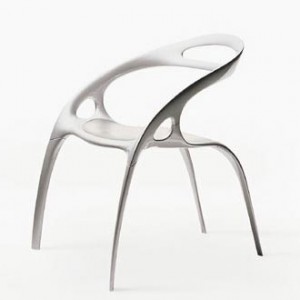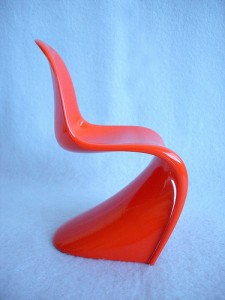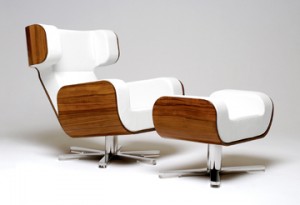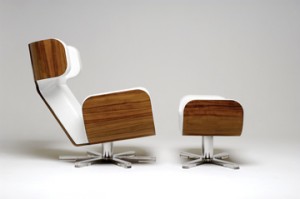Designs of the Week: Organic Furniture Design
By guest authors Charles W. Bush and Kathy Hwang of 3Strand Innovation, a brand, design and business consultancy.
It is only in the past 30 years or so that organic design has only been able to be manufactured industrially, making it available on the mass market. In design, the term “organic” relates to curves and shapes typically found in nature. This type of design is a direct contrast to the geometric shapes found in modernism. It also pushes the boundaries of traditional manufacturing approaches. Until the recent development of rapid prototyping and 3D printers, manufacturing organic shapes posed too high of an expense to reach the mass market. Today architects and designers are making their careers on manufacturing natural-looking sculptural forms. Organic design is a celebration of designing forms that promote harmony between human habitation and the natural world, directly in the face of manufacturing constraints.
Ross Lovegrove – Go Chair Many claim this chair to be the quintessential example of organic design. It is rumored to be modeled on a the curves of a bear skull. Believe it or not, the Go Chair is said to be as comfortable as it is futuristic.
Verner Pantone Chair Lovegrove, the designer of the last example, was said to have learned everything he knows from Verner Pantone. These chairs are seeing a resurgence in hip clubs arround the world. If you ever get the opportunity to see a Pantone exhibit, take it. Pantone successfully pushed every boundary available in the 1970s and in many ways pioneered how many of us see design today.
OS01 – On-Site-Studio This bench, which bears a striking resemblance to a giant piece of penne, was created as part of project to recycle industrial materials. The OS01 is surprisingly able to use antiquated technology and materials to create something visually organic.
Wing Chair – Michael Malmborg While reminiscent of the classic Charles and Ray Eames lounge chair, this lounger is a beautiful upgrade. It is made with the same visco-elastic material developed for space shuttle application and popularized by Tempur-Pedic. The design uses biggest piece of bent wood ever used to create a chair, and the manufacturers have actually taken the extra steps to get it certified by The Space Foundation.
Meteor Table – Chista You can’t get much more organic than this. Chista’s table is made simply taking one commodity, a slice of teak tree, and polishing it. Taking a familiar form in nature and pairing it with an unintuitive color and texture makes this piece a source of childlike awe.
This segment is a part in the series : Designs of the Week
. Furniture
. Steampunk
. The Movie Theater Experience
. Desserts
. Social Entrepreneurship
. The Hearth
. Redesigning the Wine Experience
. Organic Furniture Design
. Simplicity
. Political Campaign Posters More »»
. Kitchen Design
. Blogs
. Blog Ad Space
Featured Videos
Can 1M/1M Help Me Raise Money?
How Does 1M/1M Democratize Entrepreneurship Education?
How Does 1M/1M Democratize Management Consulting?
When Is The Right Time To Join 1M/1M?
Can 1M/1M Help Me With Business Development?
Can 1M/1M Help Me With Market Sizing?
Can 1M/1M Help Me Validate My Product?
Will I Have Private 1-on-1 Sessions In 1M/1M?
How Does 1M/1M Help Entrepreneurs Connect With Silicon Valley?
Mentoring or Consulting?
Why Does 1M/1M Charge $1000 a Year?
Why Does 1M/1M Partner With Local Organizations?
Why Don\’t Mentoring Networks Work?
Why Is It Important To Study With 1M/1M Now?
Dan Stewart Story
Vikrant Mathur Story






